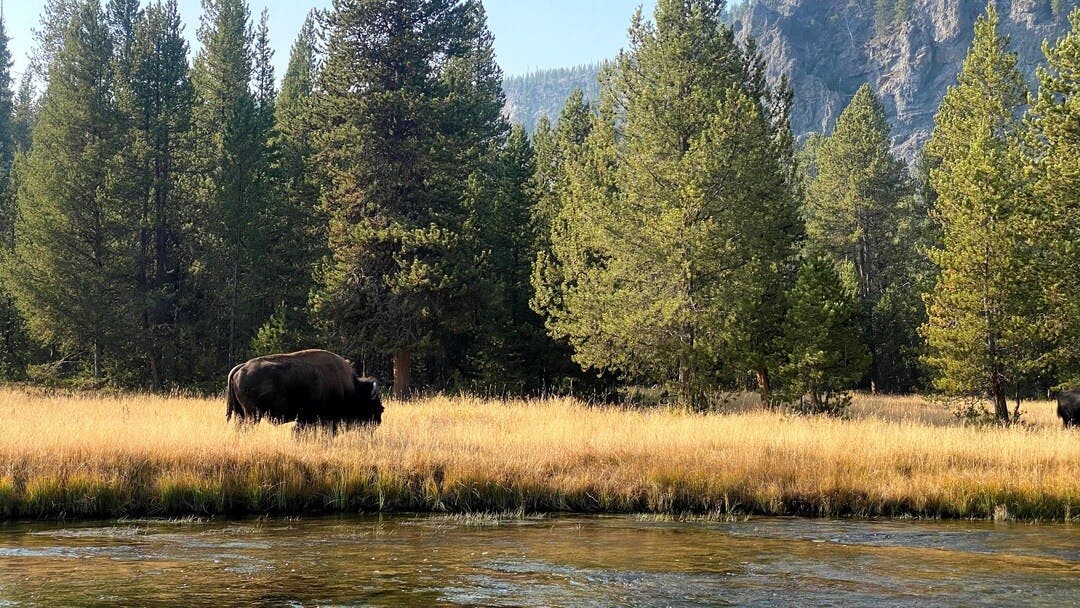Markdown Image Captions
November 25th, 2020Although HTML lets developers define <figure> elements with images and captions, Markdown doesn’t provide a built-in syntax for it. Instead, authors need to insert raw <figure> HTML elements into their Markdown files. This is pretty painful - it breaks up the flow of Markdown files and is a non-starter for non-developers. This post details an alternative: by writing a remark plugin, we can extend Markdown’s syntax to support image captions!
Specifically, let’s use this syntax for captions: . If an image has a caption, instead of producing just an <img> HTML element, we’ll output a <figure> element wrapping an <img> and <figcaption>. For example,

produces:

By using Markdown’s existing syntax for image alt tags, we can use remark’s built-in AST parser and add nodes to the output tree instead of needing to extend the parser itself.
Skeleton code
remark converts a Markdown string into an AST, and, after optionally passing the AST through a series of plugins, converts that AST into the desired output format. For this post, we use remark-html, which outputs an HTML string. We’ll be writing a plugin that rewrites image nodes in our AST. A remark plugin is a higher-order function of type (opts: any) -> ((tree: MDAST) => void) - the plugin modifies the AST in place. Here’s some skeleton code:
import remark from "remark";
import html from "remark-html";
function addCaptionsToImages(opts) {
return tree => {
// TODO!
};
}
async function markdownToHTML(markdown) {
return await remark().use(addCaptionsToImages).use(html).toString();
}Although it wouldn’t be particularly hard to walk the tree ourselves, we’ll use the NPM package unist-util-visit to do it for us. By setting its second argument to ["image"], we can run our processing function only on image Markdown nodes:
import visit from "unist-util-visit";
function addCaptionsToImages(opts) {
return tree => {
visit(tree, ["image"], node => {
// TODO: modify image nodes in place
});
};
}Processing captions
Upon encountering an image node, our first step is to extract the caption from the rest of the alt text. Nodes are in the mdast format - so the alt text is just in node.alt. Then, we can use a regex to extract the caption, if it exists, and return both caption and alt:
function extractCaption(node) {
const captionRegex = /(\{caption=([^\{\}]+)\})/;
if (!node.alt || !captionRegex.text(node.alt)) {
return { alt: node.alt };
}
const [captionWithControl, _, caption] = captionRegex.exec(node.alt);
return {
caption,
alt: node.alt.replace(captionWithControl, ""),
};
}If a node doesn’t have a caption, our visit function can just exit. If it does, however, we’ll need to create two new nodes and modify our existing image node:
<figure>parent node with two children: -<caption>node -<img>node, with the correct alt tagmdastnodes are just Javascript objects, so let’s build some!
const { alt, caption } = extractCaption(node);
// shallow copy the existing node, since we're going to replace it
const imgElement = { ...node, alt };
const captionElement = {
type: "element",
data: { hName: "figcaption" },
children: [{ type: "text", value: caption }],
};
const figureElement = {
type: "element",
data: { hName: "figure" },
children: [imgElement, captionElement],
};Note that we define the HTML tag by setting data.hName on each element.
Because we’re editing the image node in place and because JS is pass-by-reference - we need to modify our input image node to become our figure node. We can do this by removing all source properties and adding all properties of the figure object, like so:
// replaces all properties of source with those of target
function replace(source, target) {
for (const property in source) {
delete source[property];
}
Object.assign(source, target);
}
replace(node, figureElement);All together
Let’s pull all these snippets together into a cohesive plugin:
import remark from "remark";
import html from "remark-html";
import visit from "unist-util-visit";
// replaces all properties of source with those of target
function replace(source, target) {
for (const property in source) {
delete source[property];
}
Object.assign(source, target);
}
function extractCaption(node) {
const captionRegex = /(\{caption=([^\{\}]+)\})/;
if (!node.alt || !captionRegex.text(node.alt)) {
return { alt: node.alt };
}
const [captionWithControl, _, caption] = captionRegex.exec(node.alt);
return {
caption,
alt: node.alt.replace(captionWithControl, "")
}
}
function addCaptionsToImages(opts) {
return tree => {
visit(tree, ["image"], node => {
const { alt, caption } = extractCaption(node);
// do nothing if there's no caption
if (!caption) return;
const imgElement = { ...node, alt };
const captionElement = {
type: "element",
data: { hName: "figcaption" },
children: [{ type: "text", value: caption }],
};
const figureElement = {
type: "element",
data: { hName: "figure" },
children: [imgElement, captionElement],
};
// in-place replacement of the image node with figure
replace(node, figureElement);
});
};
}
function markdownToHTML(markdown) {
return (await remark().use(addCaptionsToImages)).toString();
}And - one more picture showing off the end result!

